Inventory list
The Inventory list collects the developments, products and services which can provide ecosystem-based help to the municipalities to solve regional or local climate change-related water issues. The collection contains the basic data for the ecosystem based water management, the availability of the relevant experts and providers, and the list of certain developments, products and services. The list will be regularly updated during the LIFE-MICACC project.
Solution 1: Waterproof Cover
Solution Description: The purpose of a water-permeable casing is to allow rainwater to seep through the surface and enter underground layers or underground storage, which helps to release it to surface water in a controlled manner. We distinguish 3 types:
Completely permeable to water: Almost all rainwater passes through the casing into the substructure or into the ground without any surface water retention.
Partially permeable: perforated pipes are located between the substructure and the subsoil, which help to transfer water in excess of the capacity of the soil into a temporary storage tank.
Impermeable: Perforated pipes lie between the substructure and an impermeable layer so that all rainwater passing through the enclosure enters a reservoir and does not seep into the soil.
All three solutions mitigate the damage caused by heavy rainfall and, when properly applied, can store excess water. The first two solutions drain rainfall into the soil, contributing to the rise in groundwater, which in some cases can lead to landslides. The third solution does not disturb the groundwater, but stores the overflow and then releases it into the environment at a controlled rate. However, its capacity is finite.
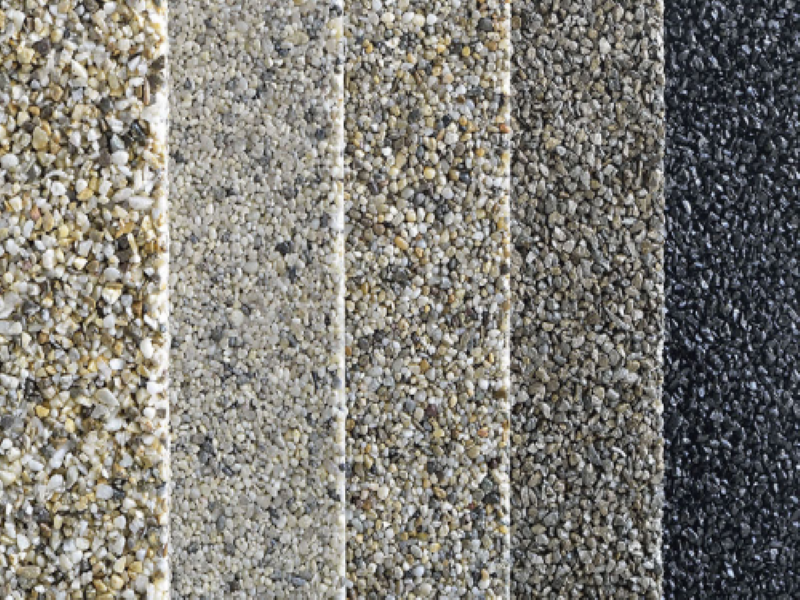
Source: nwrm.eu
Solution 2: Restore Stream Beds to their Natural State
Solution Description: By stream or riverbed, we mean the base of a stream, including river banks. In the past, many beds have been artificially lined with concrete or rocks, modifying flow parameters and reducing the local fauna and thus the diversity of vegetation. Interventions were generally aimed at preventing floods and serving agricultural interests. This standardized the speed of the watercourse and often reduced the time traveled on the river. During the restoration of the beds to the natural state, the concrete foundation and all artificial artefacts are removed and natural substitutes are used to help restore biodiversity. This intervention can help to seriously slow down the erosion process. The most important element of this is the application of different stabilization techniques. The greatest effect is achieved by restoring the vegetation cover and the naturalness of the stream bed during the operation. This is usually done by planting plants. The techniques can be divided into two groups based on their complexity:
Restoring the coast to natural state: This process does not require any serious expertise and is aimed at stopping the mid-level erosion processes.
Plant Engineering Interventions: The technique combines ecological and engineering principles to restore beds, shores and slopes using plants as the raw material that form a living frame around the problem area.
Source: nwrm.eu
Solution 3: Rewind
Solution Description: River bends, which are generally U-shaped, significantly reduce the flow rate. In the past, they were often artificially straightened by cutting corners. The purpose was generally to facilitate and speed up river navigation, to protect against floods and to cultivate new areas. During the rewinding process, the cut parts are reconnected to slow down the flow. This has positive effects such as increasing biodiversity and restoring natural sedimentation. These revitalized areas can provide home to a great many aquatic and terrestrial organisms.
Source: nwrm.eu
Solution 4: Removal of Dams and Other Crossing Obstacles
Solution description: Dams and other man-made structures are obstacles that separate the river's natural wildlife and cause serious problems with sediment management in the vicinity. Removing them can restore natural flow directions as well as the natural dynamics of sediment and wildlife.
Source: nwrm.eu
Solution 5: Remove artificial river banks
Solution Description: Artificial river banks help control the movement and changes of the river bed, while preventing the water from laterally connecting to its surroundings. Even partial removal can help the appearance of natural flow directions and dynamics and reduce the risk of flooding. This measure is a prerequisite for several other water retention solutions, such as re-winding or restoring the riverbed to its natural state.
This measure can be particularly effective for large, swollen pebble bed beds, where pebbles are continuously washed away by water and lack slow-flow protected areas suitable for aquatic life. These areas are extremely important for river fishing, as the spawning habits of many species are linked to these habitats. However, this is one of the most difficult measures to implement, as artificial shores are often linked to shipping, power generation or flood protection interests.
Source: nwrm.eu
Solution 6: TerraWay® Enclosure
Solution Description: The TerraWay® paving is a mixture of synthetic resin and gravel or rock chippings specially developed for the pavement of walkways and light-traffic roads. Its surface is hard, well-traveled, non-slip and durable. The TerraWay® cover is completely permeable to water: it transfers the falling rain to the substructure, where it drains into the ground, and lets upward uppermost soil. Due to this property it can be taken into account in the calculation of the green area.
Its main fields of application are: sidewalks, park walks, car-paths, bicycle paths, walkable roofs, roof gardens, swimming pools.
Technical characteristics, environmentally friendly features:
- strong, durable and durable surface
- with load-bearing capacity of up to 12-18 t, suitable for paving sidewalks and light-traffic roads, but with sufficient load-bearing capacity, 100 MN / m2
- antifreeze and UV stable porous surface layer with 30-35% pore volume
- permeable to water and air, no rainfall falling on the drainage system
- the roots of the vegetation get water and air
- positively influences the microclimate: it gets less warm during the day and cools down at night
- low friction resistance, low noise
- sticks well, does not slip
- groundwater neutral (LAGA ZO - unlimited use)
- 100% recyclable
- has a natural effect
- well-varied, varied design options
Manufacturer: TerraWay Magyarország Kft.
Specialist, developer: Áron Csikós
Contact: 2071 Páty, Május Street 13. | info@terraway.hu | +36 20 447 1060 | +36 20 521 3415
Further information, references, and user manuals are available on the TerraWay Magyarország Ltd. website: http://www.terraway.hu
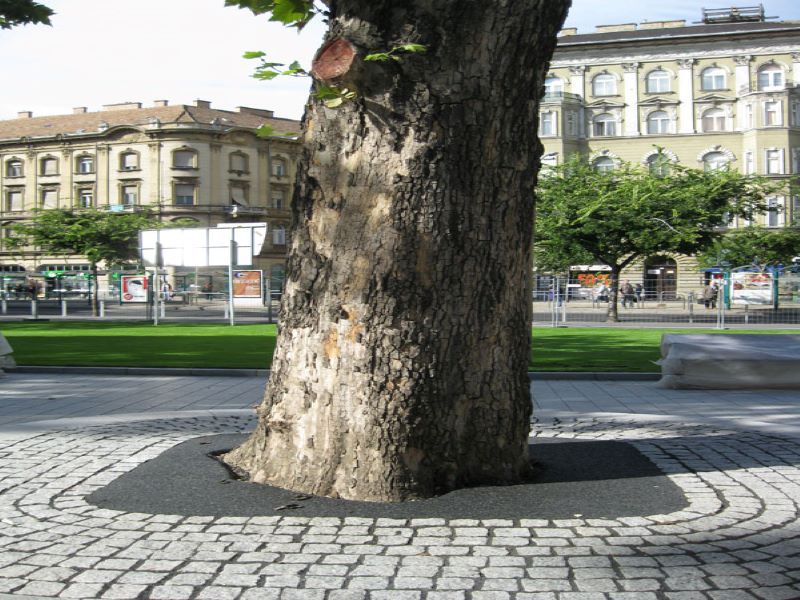
Solution 7. Rainwater harvesting tanks
Tanks allow ordinary households to easily collect rainwater and use it for garden irrigation. This saves valuable drinking water and reduces water consumption in the home. The cost of a water tank pays for itself in a few seasons. The tanks are available with tap, base and gutter water collection kit on request. Depending on their size, tanks can be purchased for a few tens of thousands of forints.
A more cost-effective solution is the complex rainwater harvesting system, which is based on the development of a system of appropriately sized, technically compatible and compatible elements that can be used over the long term. The system includes, for example, tanks, pumps and filters. Naturally, the price of the complete system is considerably higher than that of a conventional water tank.
Source:
https://gardino.hu/collections/esovizgyujtok?gclid=CjwKCAjwv_iEBhASEiwARoemvJ0VyU072ArRsdRqSxDdJbLBgrh9SCpfQ2PdWLGf0mt2CTYDmBERTxoC0LcQAvD_BwE
https://tartalyhaz.hu/esovizgyujtes-esovizgyujto-tartaly-tartalyok-ontozes-vizgyujtes.html?gclid=CjwKCAjwv_iEBhASEiwARoemvNvAble8EgkPu2jMWgIE1de_YxS0OqAryLpygoJOmgQ8Z8EMyg6b1BoCPjgQAvD_BwE
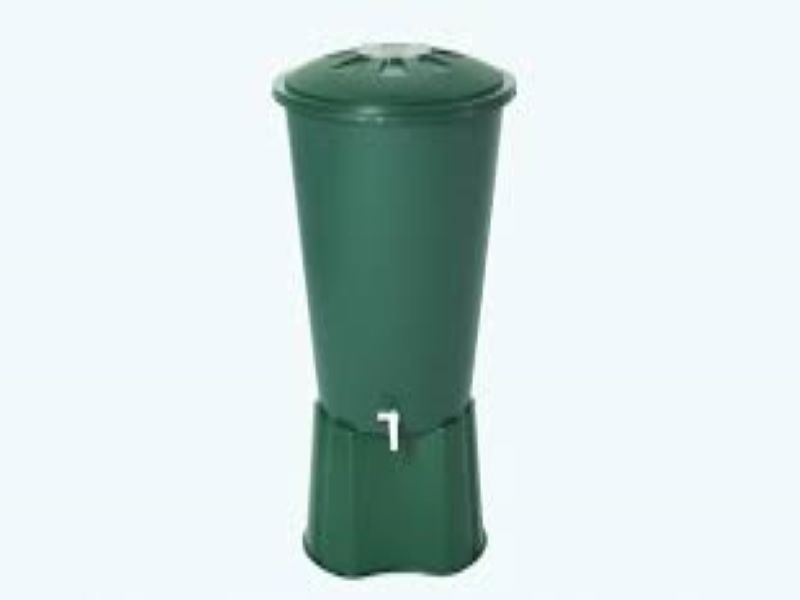
Solution 8. Extensive green roof
Extensive green roofs are low-maintenance, single-level living green surfaces installed on a slab. Usually constructed with a total ply thickness of 8-25 cm, the green roof ply is overlaid with an extensive roof planting mix, which is sealed with low water demand vegetation. In contrast to intensive green roofs, the plant species selection is determined: succulents and drought-tolerant grasses. Used primarily for functional reasons (water retention, mechanical protection and thermal insulation), their aesthetic value does not approach the lushness of intensive roofs.
In the selection of the plant species (taxa) used, the primary criteria are drought tolerance, minimum maintenance requirements and high regeneration capacity. In Hungary, sedums and other succulents, drought-tolerant grass species are used. These types do not grow tall, reaching a maximum full maturity of between 5 and 40 cm. They are typically not as walkable as turf surfaces, but tolerate minimal trampling. Their main advantage is cost-effectiveness.
Source:
https://greenroof.hu/mi-az-extenziv-zoldteto-59?gclid=CjwKCAjwv_iEBhASEiwARoemvBLZ-mXufUR8oVFAwxmEunYe6g0X2QwlRhTGiRO9BFSKTbqC5kTagBoCelQQAvD_BwE
https://zoldteto.hu/zoldteto-termekek/
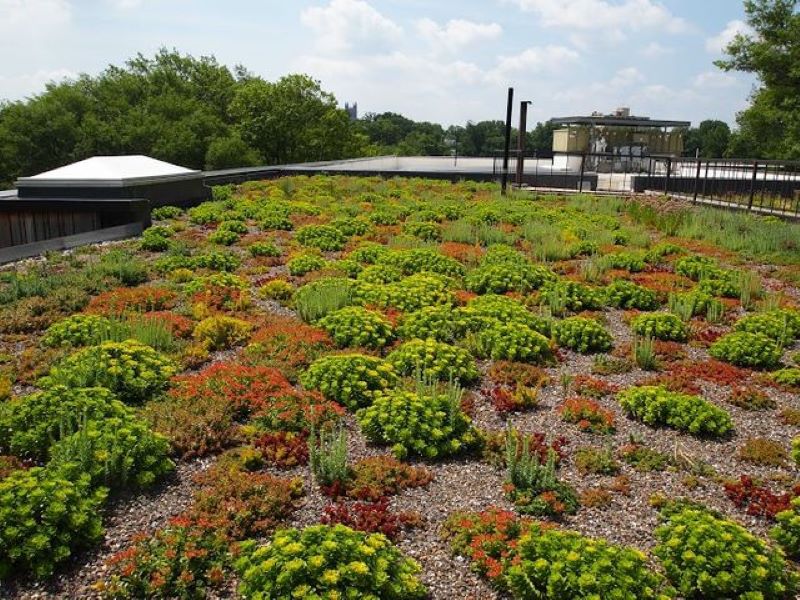
Solution 9: Intensive green roof
Among the types of green roofs for roof gardens, almost all the plants that are used for ground level gardens can be used. There are few restrictions, so perennials, grasses, lawns and even small trees can be planted.
Intensive green roofs are the most valuable type of roof garden.
They are just as versatile as ground gardens, but require intensive maintenance. Their name - intensive - also refers to the frequent, regular maintenance they require.
In our climate, quality maintenance is only possible through the installation of an automatic irrigation system. The possibilities for building an intensive green roof are abundant, but involve high investment costs. The extent depends on the use of construction and vegetation materials. An intensive green roof is therefore more valuable than an extensive one, but the costs of construction and maintenance are substantially higher.
Source:
https://zoldtetoepites.hu/zoldtetok-tipusai/
https://zoldteto.hu/zoldteto-termekek/
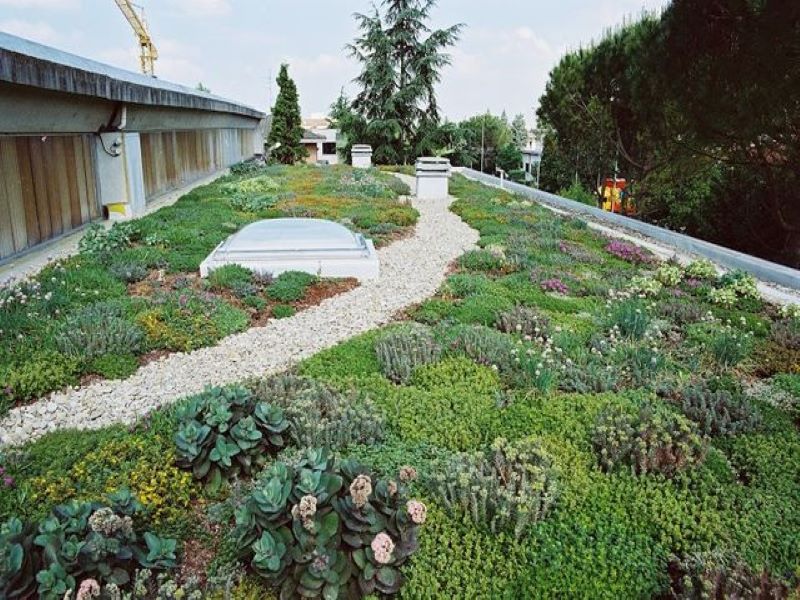
Solution 10: Green facades
Lugashes were made as early as 4000 BC in ancient Egypt and Babylonia. At first, only wine grapes (Vitis vinifera) were planted, and a few thousand years later, in Greece, ivy (Hedera helix) and roses (Rosa sp.) were planted.
In the case of green roofs, two types of green roofs are more commonly used, based on the form of grip and the support system requirements of the plant. When using plant species that can cling directly to the building wall by means of adventitious roots (e.g. ivy) or sucker-like branchlets (e.g. wild grape), no support system is required. For plants that can only climb on supports, additional structural solutions are required. Facades can be accessed not only from below but also from the roof. In this less frequently used type, hanging plants are planted in the roof garden. This solution does not require a separate support system.
source: https://www.levego.hu/sites/default/files/kiadvanyok/zoldtetotanulmany.pdf
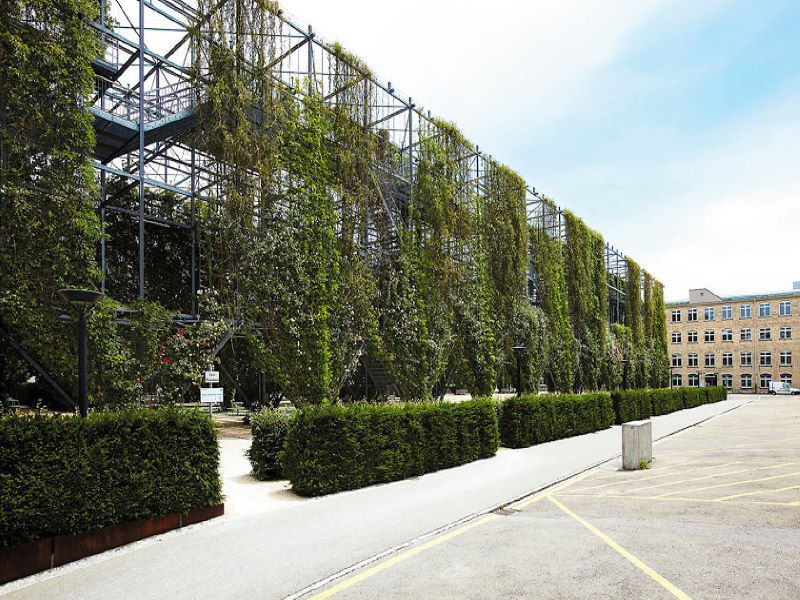
Solution 11: Rain Gardens
Rain gardens are incredibly practical and can help you with many things. Rain gardens are incredibly practical, they can help us with so many things, that's why I'm recommending you to read our article about rain gardens and how to build them, join me today!
Thanks to climate change, the frequency, type and amount of rainfall is changing worldwide, resulting in some places receiving less rainfall than before and others receiving more than usual. These changes are making rain gardens increasingly popular. A rain garden is an excavated area that allows water to drain away from flat surfaces - such as rooftops, driveways, roads, terraces, etc. This prevents water from reaching the local sewage system and damaging the foundation of the house or the rest of the porch. A rain garden can also be tastefully designed, so it can be an attractive ornament to your yard as well as being extremely useful! It's important to remember, however, that rain gardens are not garden ponds - soon after the rainfall, the water disappears and they become just as dry as the rest of the garden. This is why, during periods of low rainfall, rain gardens also require irrigation.
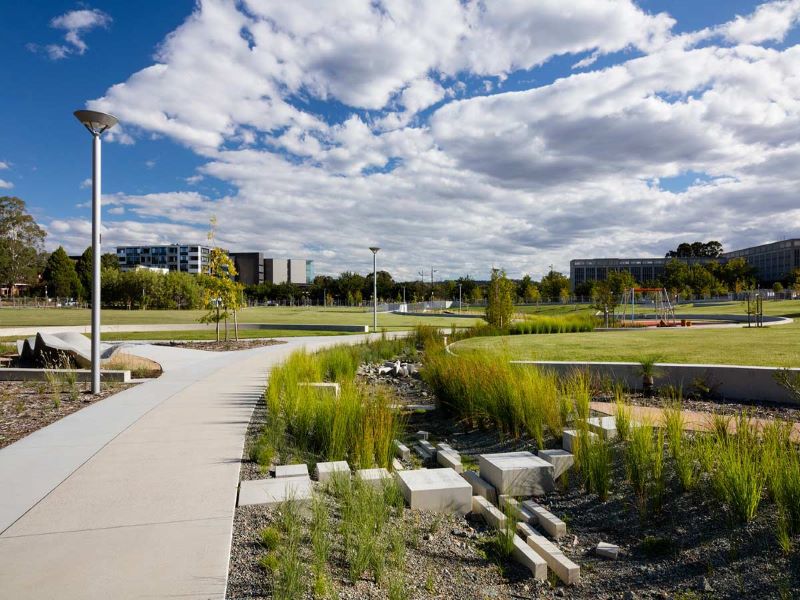
Source:
https://kertesz.blog.hu/2017/08/20/mi_az_az_esokert
https://www.agraroldal.hu/esokert.html
Solution 12: Surface desilting
The biggest problem with urban paved surfaces is the drastic reduction in the amount of water infiltrating into the soil, resulting in increased runoff and reduced evaporation. Accordingly, water-sensitive design aims to:
By keeping water in place,
reducing runoff
increasing the evaporative surfaces.
One of the primary goals of sustainable stormwater management is to create such areas through surface runoff, which is not only the cheapest but also the most natural method. Plant-covered surfaces are not only aesthetically pleasing, but the web of soil particles and roots also filter water thoroughly. Therefore, generally speaking, a slow, spread over a large area, percolation through a closed plant cover is the most beneficial. Where space is limited or the permeability of the soil is poor, the percolation surface may need to be combined with or replaced by an underground percolator. If rainwater does not enter the leachate through the plant cover, provision should be made for pre-treatment of the water. For heavily compacted soils, the only option is reservoir storage. Water quality control is also important to prevent eutrophication and clogging.
Source:
https://budapest.hu/Documents/V%C3%A1ros%C3%A9p%C3%ADt%C3%A9si%20F%C5%91oszt%C3%A1ly/ZOLDINFRASTRUKTURA_csapdek_10_01_online.pdf
Solution 13: Greening urban utilities
Greening of urban utilities should aim to reduce the amount of water entering the sewers and thus the congestion of the system by retaining rainwater. This could also solve problems in areas that currently have no stormwater drainage at all. The slowing of run-off and the clearing of green spaces also has a positive impact on the water quality of receiving streams and reduces the likelihood of flash flooding.
The utility system for stormwater conveyance should, where possible, be designed to favour the use of above-ground solutions, open sumps and ditches.
Source:
https://budapest.hu/Documents/V%C3%A1ros%C3%A9p%C3%ADt%C3%A9si%20F%C5%91oszt%C3%A1ly/ZOLDINFRASTRUKTURA_csapdek_10_01_online.pdf
Solution 14: Blue roof
The potential water storage capacity of flat roofs can be particularly important in dense inner-city environments. By using the surface of flat roofs as shallow basins, significant amounts of rainfall can be retained, much of which evaporates. This can reduce peak rainfall and the urban heat island effect.
If the building structure has the appropriate load-bearing capacity, blue roofs are a simple and inexpensive solution. Blue roofs are easiest on roofs with a slope of less than 2%, and for slopes greater than 2%, divider elements can be installed to increase the slope and slow down run-off. A critical aspect is that the roof waterproofing must be perfect. The maximum water layer thickness is 12 cm. The reservoir area is often covered with a layer of washed gravel as ballast for the insulation. As with pools, a drain is required to drain the roof and an overflow to carry away rainfall in excess of the roof's capacity. The run-off water can be discharged into surface or subsurface purification and sedimentation elements. Slow runoff is beneficial because it increases evaporation, but to prevent algae growth, the maximum residence time of water on the roof is 72 hours.
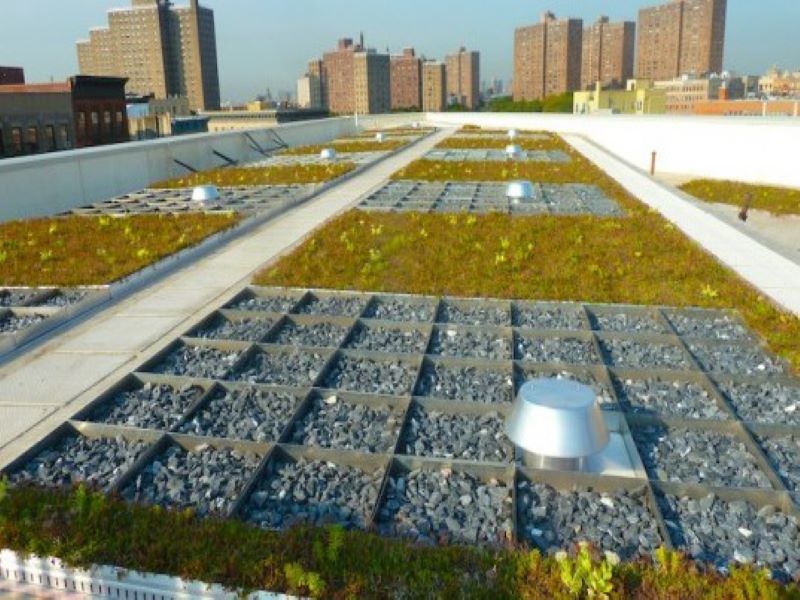
Source:
https://budapest.hu/Documents/V%C3%A1ros%C3%A9p%C3%ADt%C3%A9si%20F%C5%91oszt%C3%A1ly/ZOLDINFRASTRUKTURA_csapdek_10_01_online.pdf
Solution 15: Road Digging
Roadside trees are a prominent linear element of the urban green infrastructure. Roadside planting is particularly important in areas where dense development means that there is almost no opportunity for green space to be planted. Trees absorb water from the soil and evaporate it over large areas, which can cool the air in their immediate vicinity by up to 10°C. The lifespan of planktic trees is generally much shorter than that of forest species. Since the average tree reaches the crown size at around 20 years of age, when it becomes a valuable component of the urban climate and ecosystem, the best possible living conditions must be provided to ensure that trees reach this age.
Proper staking and adequate water and nutrient replenishment during the first three years are essential, followed by the necessary tree care afterwards. During construction, the root zone of the trees should be protected from deterioration, soil compaction and leaching of chemicals and building materials, and the use of sprinklers in winter should be avoided!
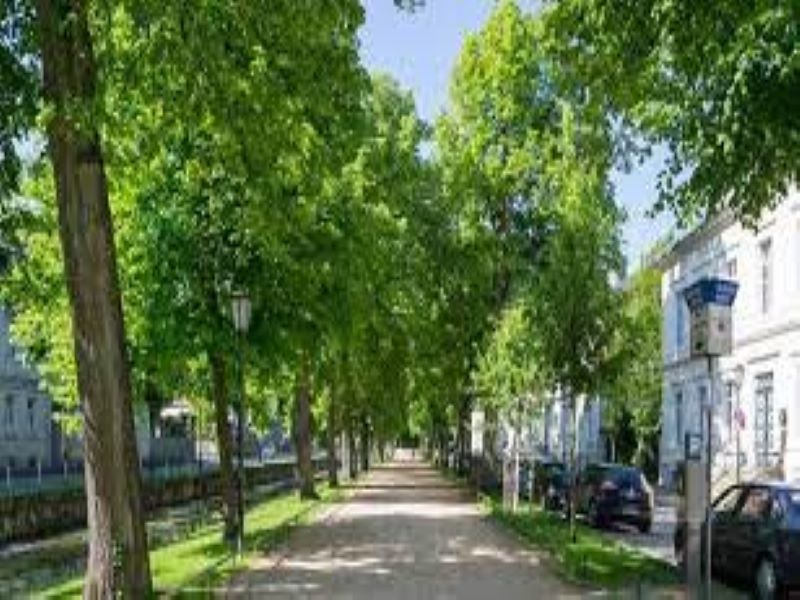
Source:
https://budapest.hu/Documents/V%C3%A1ros%C3%A9p%C3%ADt%C3%A9si%20F%C5%91oszt%C3%A1ly/ZOLDINFRASTRUKTURA_FUZETEK_6_online%20verzio.pdf
Solution 16: Drainers
In the case of drainage ditches, incoming rainwater is discharged directly into the drainage layer and from there into the surrounding soil layer. They have the advantage of high capacity and very fast water absorption. As there is no vegetation and a finer soil layer above the gravel layer, the rainwater is unfiltered and is carried with its sediments into the drain. This eventually clogs the pores and the drains need regular cleaning. Unfiltered rainwater can also pose a risk to groundwater quality. These disadvantages make the use of this device less recommended.
The disadvantage of drainage ditches is that they can become clogged and therefore need to be cleaned every few years (depending on the amount and type of contaminants that enter from the environment). The top layer of gravel, which has become silted up, should be lifted out and replaced after the dirt has been removed.
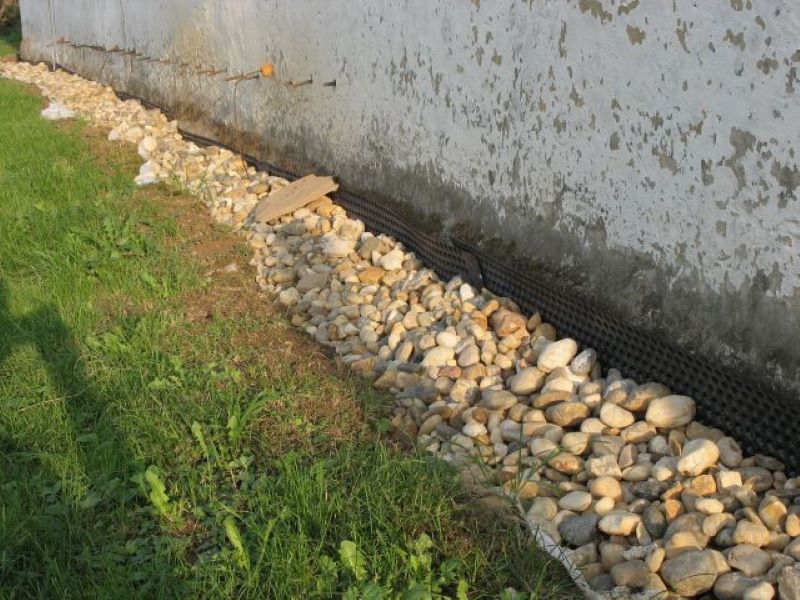
Source:
https://budapest.hu/Documents/V%C3%A1ros%C3%A9p%C3%ADt%C3%A9si%20F%C5%91oszt%C3%A1ly/ZOLDINFRASTRUKTURA_FUZETEK_6_online%20verzio.pdf
Solution 17: Filter trenches
A filter trench is a planted sunken area similar to a rain garden, but its main function is water purification. The structural difference between the two is the structure of the soil layer and the waterproof bottom. Slightly polluted rainwater is first filtered by the roots of the planted plant and a fine-grained layer of soil. The water then flows into a transition layer that prevents the sandy topsoil from infiltrating into the drain. Finally, the filtered water enters a gravel drainage layer, from where it is drained by a drainage pipe to a siltation or reservoir element or, ultimately, to the sewer. As with the root zone cleaner, the filter trench is usually separated from the subsoil by a watertight membrane and is therefore not suitable for siltation. The side wall of the ditch can be of a grassy design similar to a leaching ditch, to increase its capacity.
The maximum depth of the planted clearing zone is 30 cm, with a top layer of 20-30 cm. This is followed by a 10 cm layer of small-grained temporary gravel or a layer of geotextile, followed by a layer of drainage sized according to capacity. The slope of the gully surface is up to 1:2. Its application is independent of the quality of the existing soil due to the impermeable layer and can even be applied to contaminated soil. To prevent siltation, it is important that erosion around the trench is kept to a minimum. It is important to design rainfall inlet points appropriately (paving the waterway at the point of inflow or, if necessary, slowing down run-off by stone spreading). The surface of the gully can be stabilised with coir until vegetation has established
Source:
https://budapest.hu/Documents/V%C3%A1ros%C3%A9p%C3%ADt%C3%A9si%20F%C5%91oszt%C3%A1ly/ZOLDINFRASTRUKTURA_FUZETEK_6_online%20verzio.pdf
Solution 18: Water purification in the weeding zone
A root zone water purifier is an area that mimics a natural swamp, reserving water and purifying it with the help of soil and vegetation. It can be used, for example, to purify water from combined network overflows or collected in storm drains before it is discharged to the receiving water body. After pre-cleaning, the water is discharged into the reed-covered area and then slowly percolates through the soil layer and out through drainage pipes under the root zone. Root zone cleaners have a number of criteria for optimum performance, but when these are met they are effective and require little intervention. The pre-cleaner and water conveyance elements should be inspected regularly and deposits removed as necessary. Drainage pipes should be cleaned by opening one end to the surface. Water quality should be monitored regularly.
Source:
https://budapest.hu/Documents/V%C3%A1ros%C3%A9p%C3%ADt%C3%A9si%20F%C5%91oszt%C3%A1ly/ZOLDINFRASTRUKTURA_FUZETEK_6_online%20verzio.pdf
Solution 19: Peat and log dams
Rootstock dams: Dams made of floating wood, mostly small, made of wood shavings or thatch, which partially permeate the water. At low flows, they can release all the water, but at high flows, they spread much of the water out into the floodplain, releasing only enough water to prevent flooding of the settlement. This increases the pooling time and reduces the flood peak.
Log dams: Apart from this, the solution is cost-effective, as log dams are ideally built from locally felled timber.
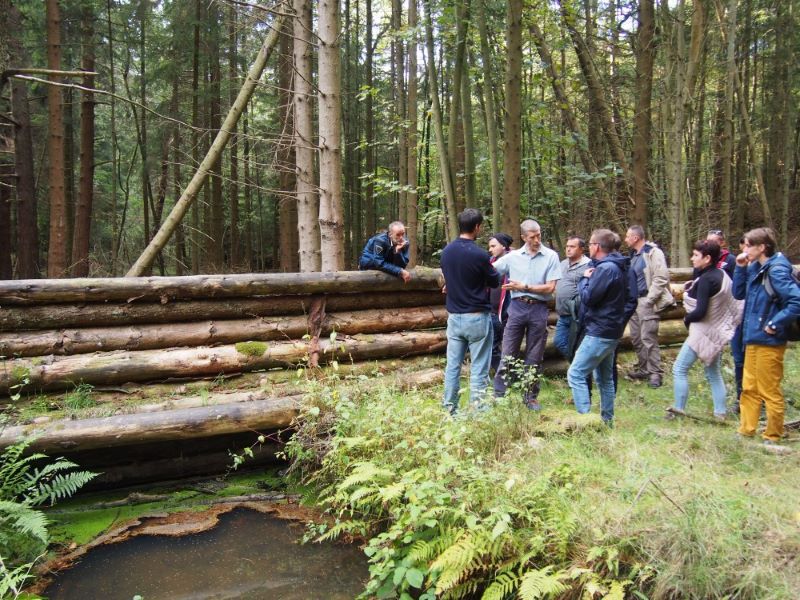
source: www.wwf.hu
Solution 20: Early sowing
Early sowing means sowing up to six weeks before the normal sowing period. This method allows earlier and faster planting of winter cover crops and the establishment of a root network for soil protection. This in turn shortens the period when the soil lies bare, thus reducing erosion and run-off and improving water infiltration. This type of sowing can also mitigate the effects of the increasingly frequent summer droughts in Central Europe, including Hungary. However, it is also important to point out that early-sown crops are more susceptible to frost damage, which farmers need to protect against. Specialised control measures such as plastic tunnel covers, greenhouses, etc. may be needed. Early sown crops may also require cultivation techniques such as reduced intensity tillage due to their increased sensitivity.
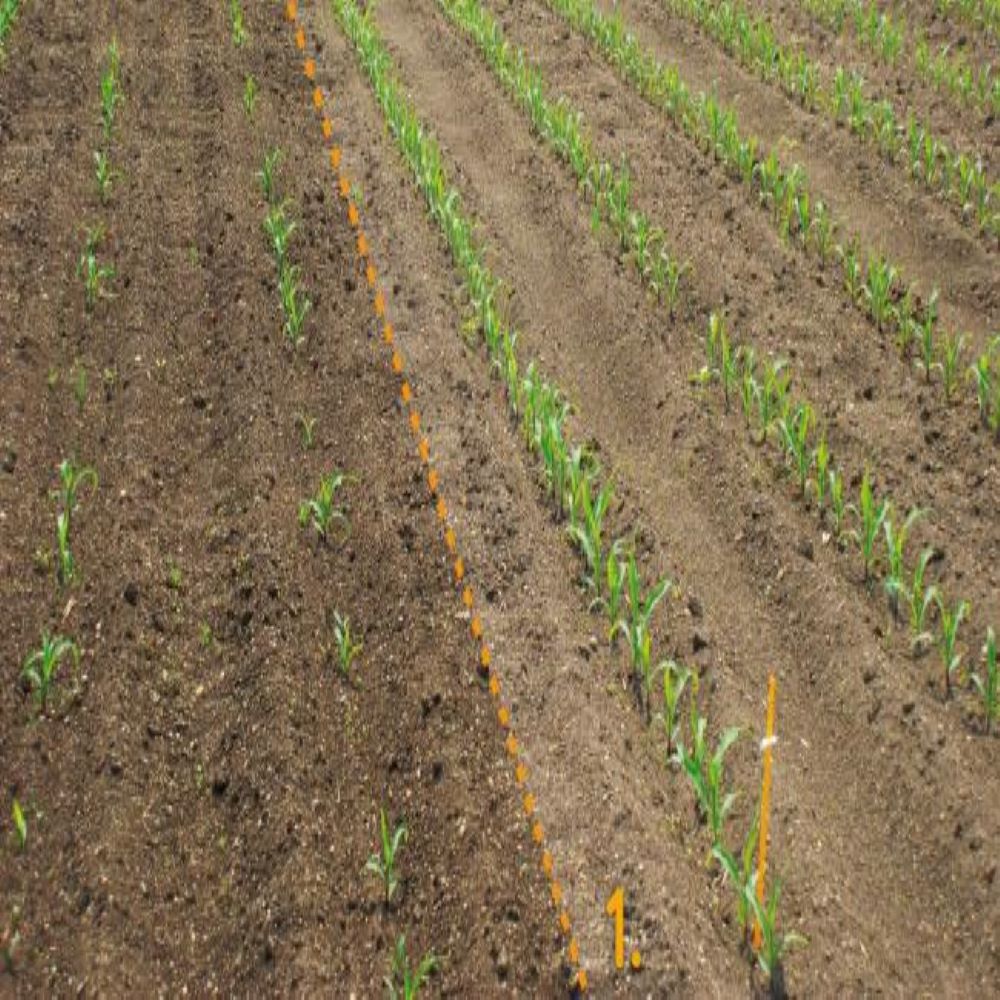
source: nwrm.eu
Solution 21: Traditional terrace farming (in hilly areas)
Traditional terraced farming can be used in hilly areas. They consist of mostly stone-walled, almost horizontal plateaux built along the contours of slopes. By reducing the effective slope of the land, terracing reduces erosion and slows surface runoff by slowing down the flow of rainwater. This increases infiltration and improves soil moisture, and reduces the risk of flash flooding. This measure involves less landscaping and does not require heavy machinery to level or cut. However, terracing solutions require considerable labour, making them a relatively expensive solution.
source:nwrm.eu
Solution 22: Mulching
Mulching is the application of a layer of material to the ground surface. The purpose of mulching is to conserve soil moisture, improve soil fertility and health, reduce weed growth and improve the appearance of the area. Mulching is commonly used to cover the soil surface with bark, wood chips, vine pulp, nut shells, garden green waste, crop residues, compost, manure, straw, dry grasses, leaves. It can be applied to bare soil as well as around existing plants. Mulches of manure or compost are naturally incorporated into the soil by the action of worms and other organisms. The process is used in both crop production and horticulture and, if applied correctly, can significantly improve the water-holding capacity of the soil.
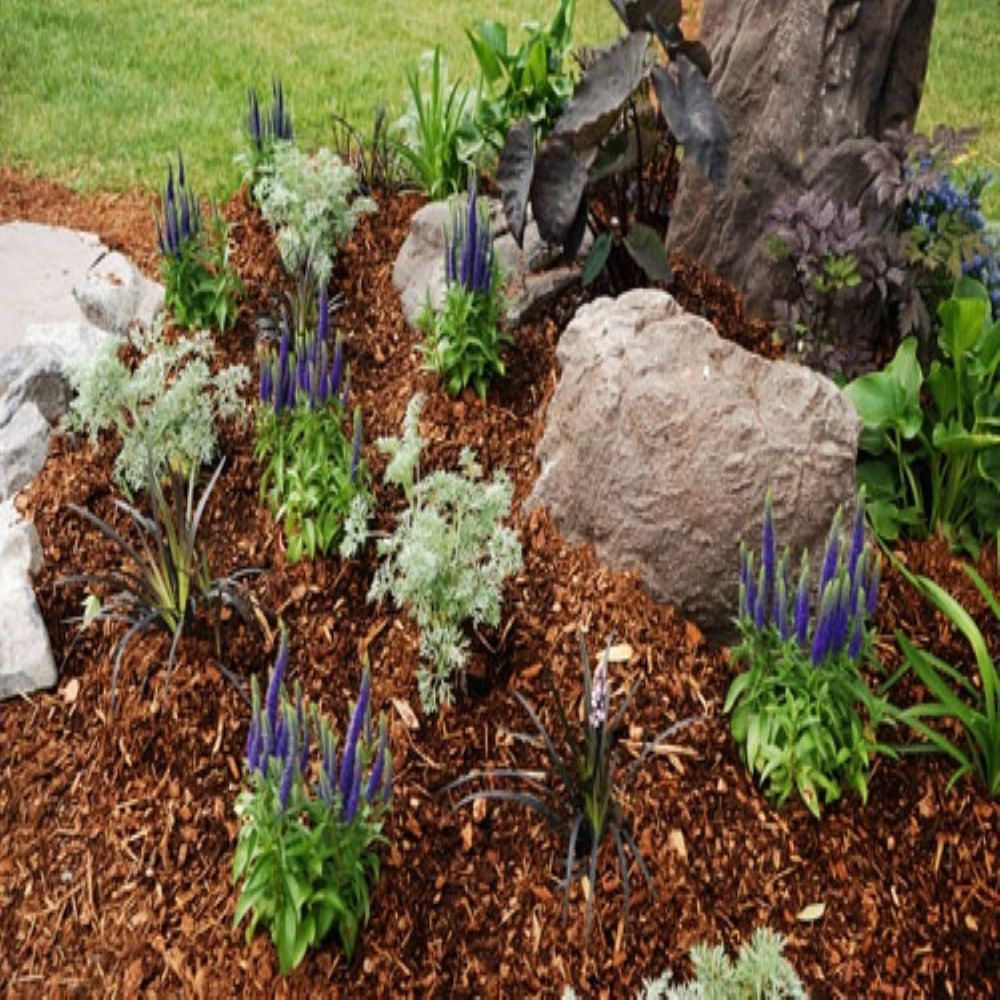
source. nwrm.eu
Solution 23: Use of buffer strips in agricultural cultivation
Buffer strips are areas on the edges of arable land that are covered with natural vegetation such as grasses, shrubs or trees. They can have a variety of vegetation configurations, from bare grass to a combination of grass, trees and shrubs. Due to their permanent vegetation, buffer strips provide good conditions for efficient infiltration and slowing of surface runoff, thus contributing to natural water retention. They can also significantly reduce suspended solids, nitrates and phosphates from agricultural run-off. Buffer strips can be placed in riparian zones or further away from water bodies, on the edges of fields, hillsides or within fields (e.g. bug banks). Hedgerows on long, steep slopes can reduce soil erosion by intercepting and slowing surface run-off before it becomes a damaging flow, especially if a border or buffer strip is placed adjacent to the hedgerow.
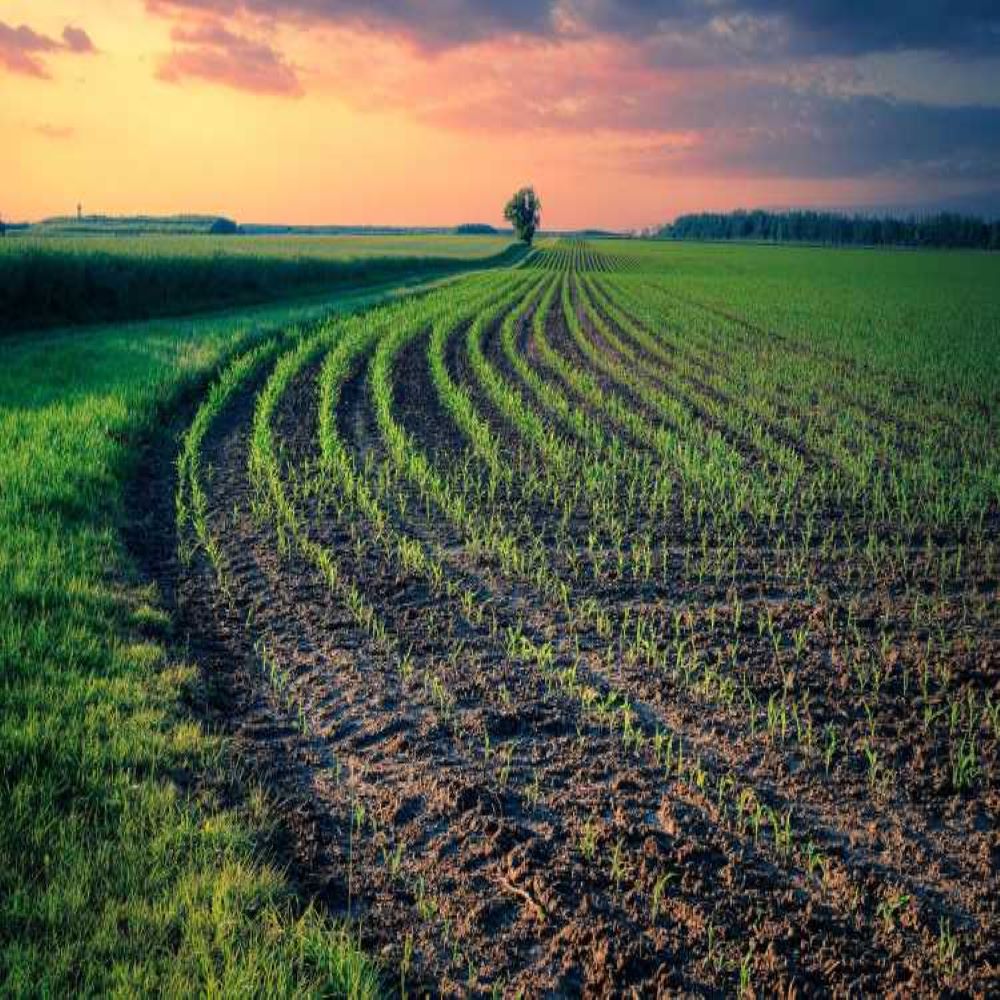
source: nwrm.eu
Solution 24: Use of buffer strips on waterfronts
Coastal buffers are wooded areas adjacent to streams and other watercourses. Although most often associated with set-aside areas following deforestation, riparian buffers can also be found in urban, agricultural, and wetland habitats. By preserving a relatively undisturbed area adjacent to open water, riparian buffers serve a variety of functions related to water quality and flow mitigation. Trees in riparian areas can effectively absorb excess nutrients and can also serve to enhance infiltration. Riparian strips slow the flow of water from the land. This can reduce sediment inputs to surface waters.
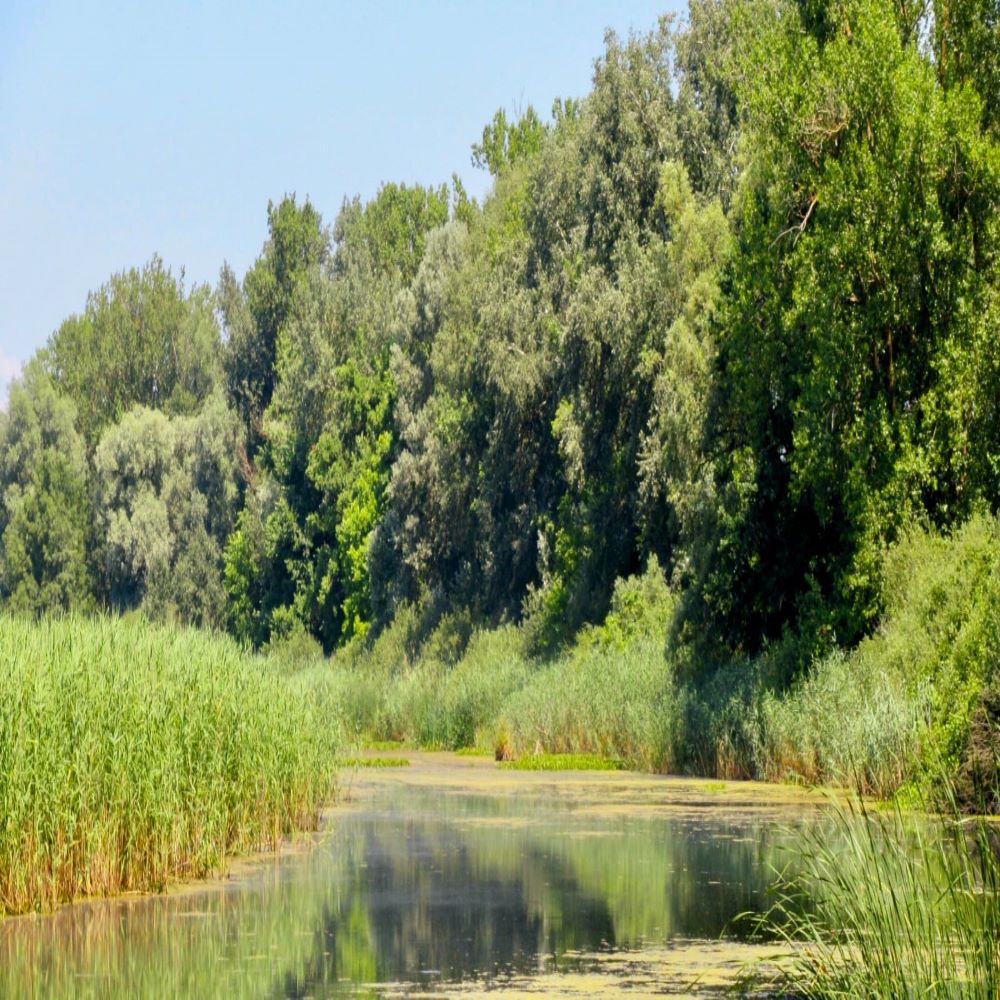
source: nwrm.eu
Solution 25: Sedimentation ponds
Sedimentation ponds are artificial ponds placed around forest ditches to slow down the water velocity and allow suspended sediment to settle. Although primarily used in forests, sedimentation ponds could be a useful temporary measure to preserve water quality on and around construction sites or mines. They can also be useful for trapping sediment in agricultural areas. The lifetime of sedimentation ponds is limited, depending on the amount of suspended solids in the influent water. However, the ponds can be maintained by removing accumulated sediment. Like most water conservation methods, sedimentation ponds work well in areas with base and moderate flows. The catchment area, hydraulic properties of the ditches, runoff velocity and soil characteristics, among other factors, influence the functioning of sedimentation ponds. Effective operation depends to a large extent on the skills and competence of the professionals who design and implement this and many other measures.
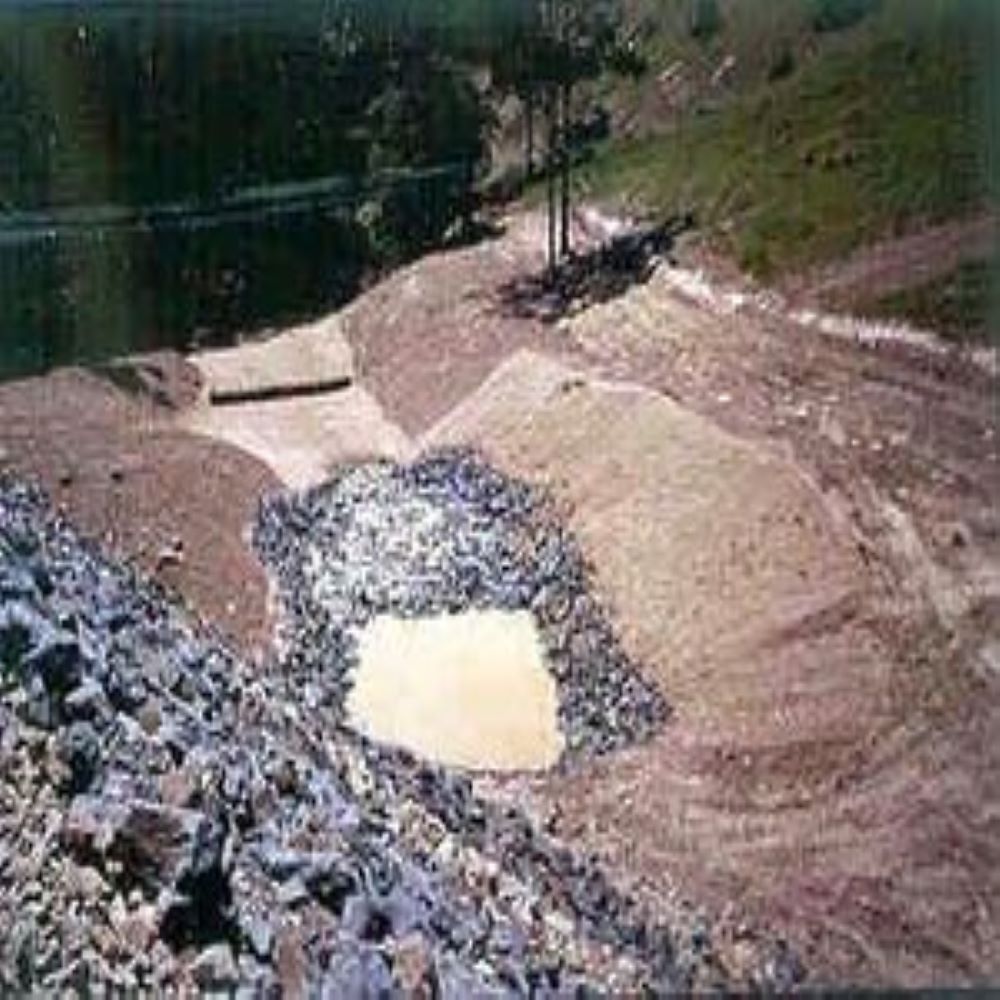
source. nwrm.eu
Solution 26: Coarse woody debris in streams, canals
Coarse woody debris in stream channels has a number of ecological and hydrological benefits. Coarse woody debris consists of large tree limbs or trunks that either fall into streams or are deposited in streams as a result of human intervention. Coarse woody debris can be planted with varying degrees of naturalness. Coarse woody debris can be used to create dams that effectively restrict the flow of water. At the other extreme, coarse woody debris from natural backwaters can be used when riparian trees naturally fall into streams. Coarse woody debris tends to slow down the flow rate of water and can reduce the peak flood stage. In addition to its role in slowing flows and promoting sediment accumulation, coarse woody debris can improve aquatic biodiversity by retaining food and providing additional habitat, such as refugia and spawning areas.
source: nwrm.eu
Solution 27: Restoring wetlands
A wetland is a natural or artificial, permanent or temporary marsh, bog, peat bog or water body where the water is stagnant or flowing, fresh, brackish, brackish or saline, including marine wetlands where the depth at low tide does not exceed six metres. Provides water retention, biodiversity enhancement or water quality improvement. Wetland restoration and management may include: technical, spatial, large-scale measures (including the installation of rewetting ditches or the cutting back of dams to allow flooding); technical, small-scale measures such as tree felling; land-use change; and agricultural measures such as the adaptation of farming practices in wetlands. These can improve the hydrological regime of degraded wetlands and improve habitat quality in general. The creation of artificial or constructed wetlands in urban areas can also help to mitigate flooding, improve water quality and enhance habitats and landscapes.
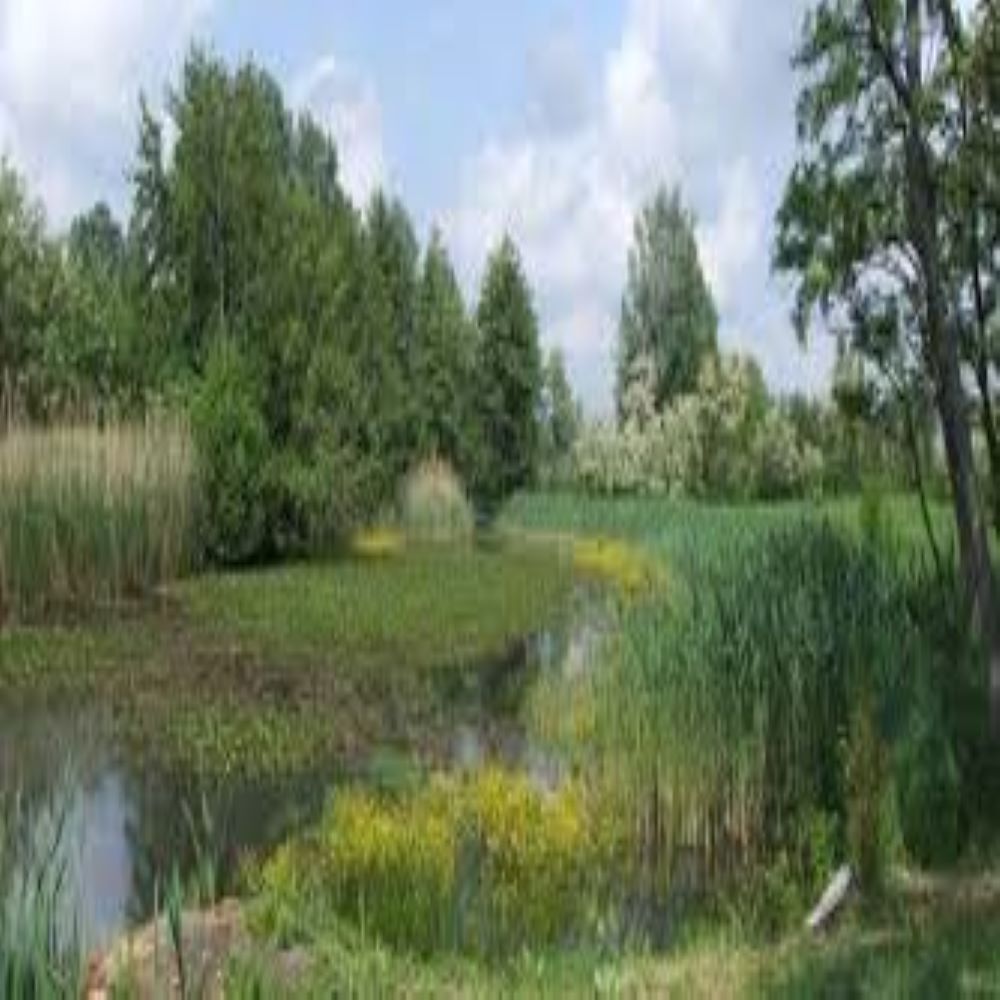
source: nwrm.eu
Solution 28: Micro irrigation
Micro-irrigation is a generic term, the common characteristic of the irrigation solutions is that the water delivery elements deliver a small amount (< 500 l/h) of irrigation water at low pressure (< 2.5 bar) and in a unit of time to the plants to be irrigated.The cross-section of the delivery elements is small, and the primary issue in the operation of the system is the purification of the water. The design is based on the soil's capacity to conduct and store water, taking into account the amount of rainfall that may fall to avoid over-irrigation.
With micro-irrigation, water can be applied in small doses, even several times a day. The design is based on daily water consumption, another difference is that the entire soil surface is not irrigated. One of the most important practical solutions is drip irrigation, which is discussed below.Micro-irrigation allows for precise application of nutrient solutions adapted to the developmental stage of the vegetation, reducing the artificial chemical load on the environment and improving crop quality.
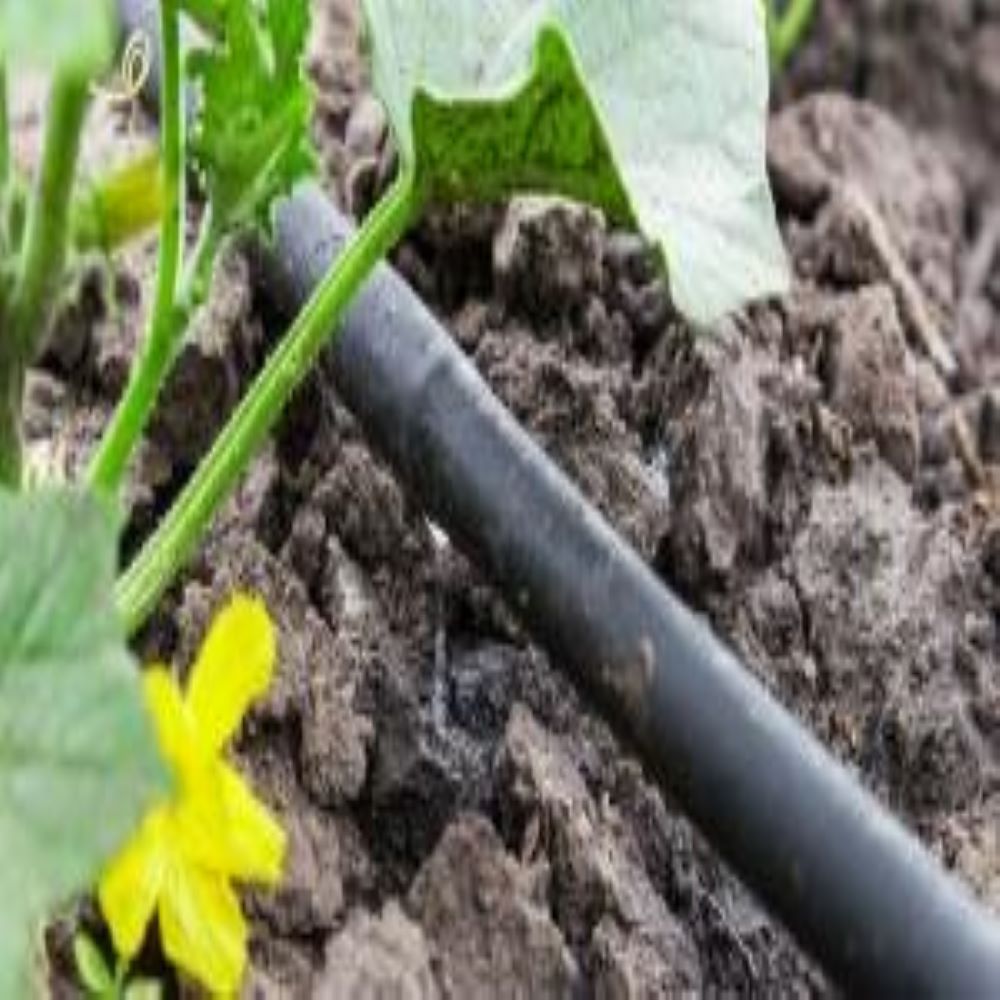
source: moe.hu












